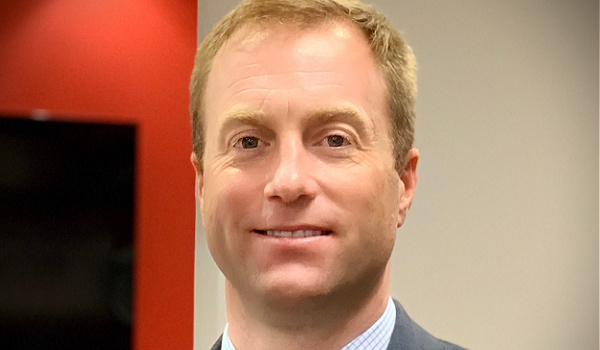Sarson Funds, Inc.
Advisors today face huge deficits in knowledge, services and products in the cryptocurrency space when compared to retail financial services firms. John Sarson recognized this when he founded Sarson Funds and now has a full team working to fill the gap.
“The financial industry is so behind on digital assets,” said Sarson, “that many advisors are at a disadvantage to their own clients.”
“It’s a rare time when clients know something more about investments than their advisor,” he said. “That makes some advisors hate cryptocurrencies even more, which doesn’t help their industry or their clients.”
Digital assets, as an asset class, continue to grow in scope and complexity at a rapid rate, which has contributed to an alarming knowledge gap for investors, according to Sarson. There are now 9,500 cryptocurrencies, out of which the team at Sarson Funds track approximately 200-300 at any given time.
Having the resources to research the industry growth and track the various cryptocurrencies and technology behind that provides investors such as Sarson an ability to be opportunistic, build broad and diversified portfolios, and discover mis-pricings within the asset class, while still allowing for “9,200 other cryptocurrencies that are more like experiments, fun projects, so-called ‘memecoines,’ get-rich-quick schemes or outright scams.”
“Part of the problem,” said Sarson, “is that many financial firms still prevent their advisors from working with digital assets like cryptocurrencies, or the products that contain them. Wirehouses and other major brokerages forbade their representatives and advisors from trading cryptocurrencies, which prevented product sponsors from talking to advisors about their products.”
As a result, most digital asset funds are not designed with financial advisors in mind and are difficult to implement as part of client portfolios, said Sarson.
“I think it started with the wirehouses, who showed us the wrong way to trade years ago,” said Sarson. “They forbade advisors to trade cryptocurrencies and now they can’t easily unmake that decision. So now their product sponsors can’t go and talk to advisors about cryptocurrency or blockchain.”
As a result, for cryptocurrencies to be widely adopted among financial intermediaries, the wirehouses have to lead the way,, said Sarson. “Even the biggest RIAs don’t control 30,000 or 40,000 advisors at a time. In the long run, the wirehouses made the wrong call and now find it terribly difficult to change directions. That’s created 40,000 walking liabilities who don’t know jack about an extremely volatile asset class that many of their clients are already investing in.”
The problem is compounded because of reluctance—or discouragement—among advisors to work with clients’ held-away assets.
“It’s not really their fault that they’re largely caught unprepared for a powerful, emerging asset class. Advisors must be educated on digital assets,” said Sarson, “and ways in which their clients can access the space. To date, there are limited opportunities to do so. A client can directly invest in digital tokens with their held-away assets, but advisors for the most part are restricted to private placements.”
Thus, many retail investors are also unable to access active management in digital assets, said Sarson.
“I think the limited partnership structure is unfair to non-accredited investors,” said Sarson. “It’s not right that they can’t get into actively managed funds in asset classes they’re already investing in.”
Companies are finding ways to work around the restrictions on alternative product structures, like using crowdfunding as a feeder vehicle into limited partnerships. While unconventional, Sarson believes the solution has merit because of the value of active management in digital assets.
“If there was ever a time in any asset class where asset management might be worth the fee, it’s right now in cryptocurrencies,” said Sarson. “There are crypto projects worth zero that are trading for astronomical prices. We saw that with Shiba Inu coin (in May). It’s an asset class that currently offers none of the consumer protections in securities we’ve enjoyed for the last 100 years in other securities, but otherwise it’s an asset class with all of the capabilities of the rest of the securities market.”
Volatility adds to the value of active management, but Sarson also agrees that investors should think carefully before offering 2% of their invested assets plus 20% of any gains to a fund manager.
The best solution to lower the high price of active management in cryptocurrencies would be to authorize a digital assets ETF, but in some cases investors and advisors might want to embrace high-cost strategies, especially in the interim according to Sarson.
“Fees are only relevant in the absence of value, and I think we’re adding a lot of value through active management. I don’t think high fees on non-active products are helping anyone right now. If you’re accessing cryptocurrencies through a grantor trust returning 3% but you’re paying 2.5% per year, you’re really paying a king’s ransom for nothing, all the fund is doing is paying its own expenses.”
Beyond the costs, advisors might find other attributes of digital asset funds unpalatable.
For one thing, many cryptocurrency funds are passive, meaning they can’t behave opportunistically when volatility strikes, said Sarson. Other active funds take a more unconstrained ‘best ideas’ approach to the asset class, making them highly unpredictable and useless for managing risk within a portfolio.
“We try to translate the prevailing ideas about risk and asset allocation into the cryptocurrency space, which is why we offer familiar segments of the asset class such as large coin funds and small coin funds,” said Sarson. “We hold to that discipline and don’t let ourselves drift so we’re not taking a larger amount of risk than we’re promising clients.”
For example, Sarson offers products that invest in small-cap cryptocurrencies, blockchain investments with a total market capitalization of $3 billion or less.
“I think we do a good job of identifying which projects are truly disruptive, and then we build best-of-breed portfolios in small-cap names,” said Sarson. “We can do that because we understand the protocol behind the disruption.”
Every position in Sarson’s funds is initiated at 2% to 4% of the total investment portfolio, and positions are permitted to grow to be as large as 8% of the portfolio.
“We don’t want to create funds that are dominated by one or two names, and we don’t want randomness, we want people to have control and discipline,” he said. “That worked well in cryptocurrency because it didn’t really formally exist until we started doing it.”







